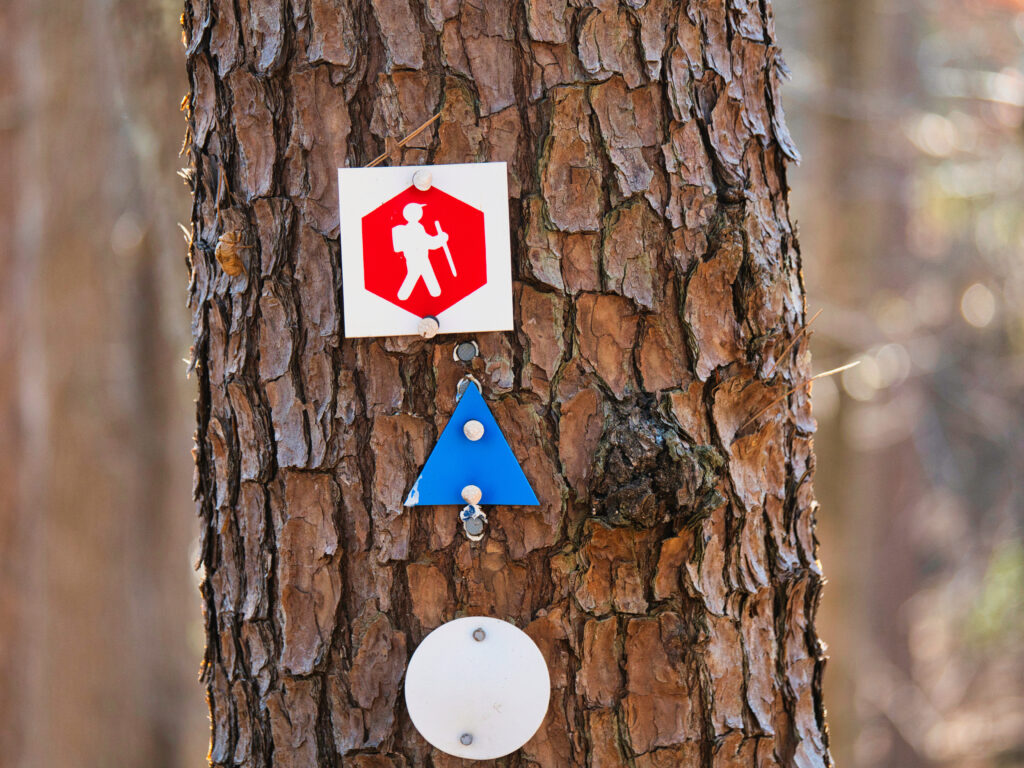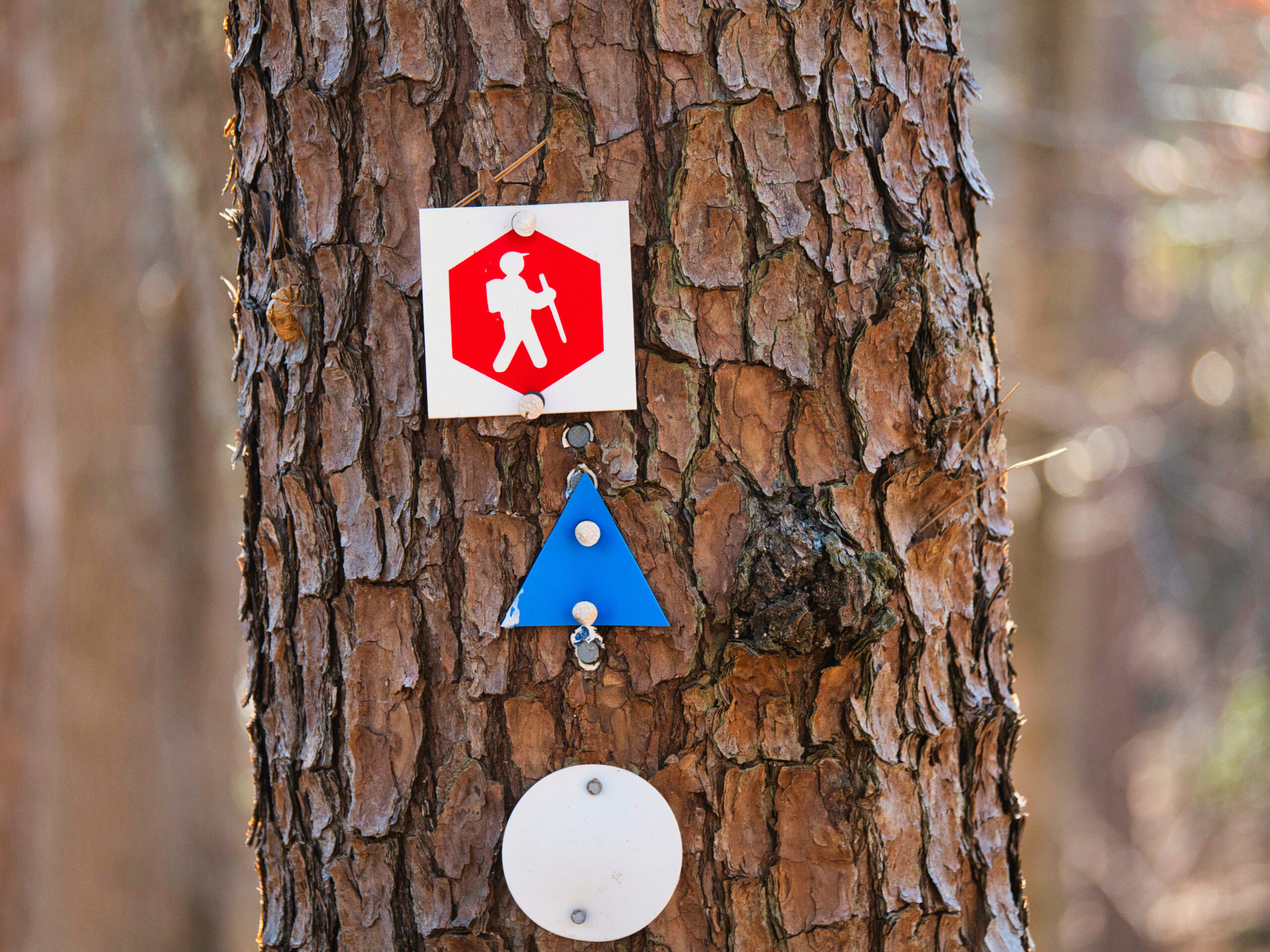
Reading Trail Markers and Signs

- reisertrailcraft
- August 25, 2023
Are you ready for your next outdoor adventure? Whether you’re an experienced hiker or a novice explorer, being able to navigate trails effectively is crucial for a safe and enjoyable journey. One skill that every outdoor enthusiast should master is reading trail markers and signs. In this article, we’ll take you through the basics of trail markers, decoding the symbols on them, interpreting trail signs, navigating trails at night, and what to do when markers and signs are missing or damaged. So, let’s dive in and unlock the secrets of trail navigation!
Understanding the Basics of Trail Markers
If you’ve ever hiked a trail, you have probably noticed colorful badges or signs along the way. These trail markers serve as guideposts, keeping you on the designated path. The beauty of trail markers lies in their simplicity – they provide clear and concise information that ensures you stay on course.
However, trail markers are not merely decorative; they play a critical role in preserving the environment and ensuring the safety of hikers. By following the designated trails, you minimize your impact on the surrounding flora and fauna. The trails are carefully planned to avoid sensitive areas and protect fragile ecosystems. By staying on the marked path, you help maintain the delicate balance of nature.
Moreover, trail markers are essential for your safety. They reduce the risk of getting lost, especially in unfamiliar terrain. Imagine venturing into a dense forest without any markers to guide you. It would be easy to lose your way and find yourself disoriented. Trail markers provide a sense of security, allowing you to explore with confidence, knowing that you can always find your way back.
The Importance of Trail Markers
Trail markers are not only beneficial for hikers but also for the overall well-being of the trail itself. By following the markers, you help prevent erosion and minimize the impact of human activity on the surrounding environment. The trails are carefully designed to distribute foot traffic evenly, preventing concentrated wear and tear on specific areas.
Furthermore, trail markers serve as educational tools. They often contain additional information about the local flora and fauna, historical landmarks, or interesting geological formations. These markers provide an opportunity for hikers to learn more about the natural and cultural significance of the area they are exploring.
Trail markers also contribute to the sense of community among hikers. They create a shared experience and a sense of camaraderie as you follow the same path as those who came before you. You may encounter messages left by fellow hikers, offering encouragement or sharing their experiences. These small gestures foster a feeling of connection and unity among outdoor enthusiasts.
Different Types of Trail Markers
Trail markers come in various forms, depending on the organization responsible for maintaining the trail. One common type is painted blazes on trees or rocks. These colorful marks are easily visible and guide hikers along the trail. They are often painted with specific colors to indicate different routes or levels of difficulty.
Another type of trail marker is signposts. These are usually placed at key junctions or points of interest along the trail. Signposts provide more detailed information, such as distances to specific destinations, warnings about potential hazards, or directions to nearby amenities.
Metal disks attached to trees are also commonly used as trail markers. These durable markers are resistant to weather conditions and can withstand the test of time. They are often engraved with symbols or numbers that correspond to a trail map, allowing hikers to navigate with ease.
It is important to familiarize yourself with the markers used in the region you’re exploring. Different trails may have their own unique markers or variations in color and design. Understanding the meaning behind each marker will enhance your hiking experience and ensure you stay on the right path.
Decoding the Symbols on Trail Markers
Now that you understand the importance of trail markers, let’s explore how to decipher the symbols found on them. The symbols provide essential information for hikers, pointing out potential hazards, indicating the trail difficulty level, and even guiding you to nearby amenities.
When it comes to trail markers, knowledge is power. By understanding the symbols, you can navigate the trails with confidence and make informed decisions along the way. So, let’s dive deeper into the world of trail marker symbols and uncover their meanings.
Common Symbols and Their Meanings
Trail markers often use a standardized set of symbols to convey information. These symbols are designed to be easily recognizable and universally understood. For example, an arrow pointing upwards might indicate an uphill climb, while a downward arrow could mean you’re heading downhill. These simple arrows can save you from unexpected surprises and help you plan your route accordingly.
But trail markers go beyond just arrows. They can also alert you to stream crossings, camping areas, or even points of interest like scenic viewpoints or waterfalls. Imagine stumbling upon a hidden waterfall, thanks to a trail marker symbol. It’s like discovering a secret treasure on your hiking adventure!
Each symbol has its own unique meaning, and it’s crucial to familiarize yourself with these symbols before embarking on your journey. By doing so, you can ensure you make the most of the information they provide and have a safe and enjoyable hiking experience.
Regional Variations in Trail Marker Symbols
While many trail markers use standardized symbols, it’s worth noting that some symbols may vary from region to region. This regional variation adds an extra layer of excitement and challenge to your adventure. If you’re an avid traveler or enjoy exploring different trails, take the time to study the symbols specific to the location you plan to visit.
Imagine hiking through the lush forests of the Pacific Northwest, where trail markers may have symbols unique to that region. These symbols could represent encounters with wildlife, such as bears or cougars, or highlight specific flora and fauna that are native to the area. By understanding these regional symbols, you can truly immerse yourself in the natural wonders of each trail and gain a deeper appreciation for the environment.
So, whether you’re hiking in the rugged mountains of the Rockies or the serene trails of the Appalachian Mountains, embrace the regional variations in trail marker symbols. They not only provide valuable information but also add a touch of local flavor to your hiking experience.
As you can see, trail marker symbols are more than just simple drawings on a sign. They hold the key to unlocking the secrets of the trail, guiding you through unknown terrain and enhancing your overall hiking adventure. So, the next time you embark on a hiking journey, take a moment to appreciate the significance of these symbols and let them be your trusted companions along the way.
Interpreting Trail Signs
In addition to trail markers, signs are another valuable source of information for hikers. They are usually placed at key intersections or points of interest along the trail. Understanding the types of information displayed on these signs can make your navigation experience even smoother.
When you embark on a hiking adventure, it’s important to be prepared and equipped with the necessary knowledge to ensure a safe and enjoyable experience. Trail signs play a crucial role in providing you with the information you need to make informed decisions along the way.
Trail signs can provide various types of information, including trail names, distances to specific destinations, and even potential hazards. These signs are designed to guide you through the trail, ensuring that you stay on the right path and reach your desired destinations.
Look out for signs that point out viewpoints, water sources, picnic areas, and camping grounds. These signs not only serve as a wayfinding tool but also help you plan breaks, stay hydrated, and make the most of your adventure. Imagine stumbling upon a breathtaking viewpoint without any prior knowledge of its existence – it’s like discovering a hidden gem!
Types of Information on Trail Signs
Trail signs are packed with valuable information that can enhance your hiking experience. Let’s take a closer look at the different types of information you might find on these signs.
First and foremost, trail signs often display the names of the trails. This is particularly helpful when you are hiking in an area with multiple trails intersecting or overlapping. By referring to the trail names on the signs, you can ensure that you are following the correct path.
In addition to trail names, signs also provide distances to specific destinations. These distances are typically displayed in miles or kilometers, allowing you to estimate how long it will take to reach your desired location. This information is invaluable when planning your hike and managing your time.
Furthermore, trail signs may highlight potential hazards that you should be aware of. This could include warnings about steep terrain, slippery sections, or areas prone to rockfalls. Being aware of these hazards can help you take necessary precautions and navigate the trail safely.
Reading Distance and Direction on Trail Signs
One crucial skill when reading trail signs is understanding how distances and directions are indicated. Let’s delve deeper into these important aspects of trail sign interpretation.
Distances are typically displayed on trail signs to give you an idea of how far you have to go before reaching your destination. Whether it’s a scenic viewpoint, a waterfall, or a camping ground, knowing the distance can help you plan your breaks and gauge your progress. So, keep an eye out for those numbers!
Directions on trail signs are often accompanied by arrows, indicating which way to turn at intersections. These arrows are essential for ensuring that you stay on the correct path and avoid getting lost. Pay close attention to these details, and if you’re unsure, take a moment to study the sign and make sure you’re heading in the right direction.
Additionally, some trail signs may include supplementary information such as trail difficulty ratings or estimated hiking times. These details can provide you with a better understanding of what to expect on the trail and help you plan your hike accordingly.
As you navigate through the wilderness, trail signs become your trusty companions, guiding you through the unknown and ensuring that you have a memorable hiking experience. So, next time you encounter a trail sign, take a moment to appreciate the wealth of information it provides and let it be your guiding light on your hiking adventure.
Navigating Trails at Night
Hiking trails during the day is thrilling, but have you ever considered venturing out at night? Navigating in low-light conditions requires a slightly different approach, but with the right knowledge, you can conquer the darkness with confidence.
Using Trail Markers and Signs in Low Light
When darkness falls, relying on trail markers becomes even more crucial. Opt for headlamps or flashlights with a focused beam to clearly illuminate the markers along the trail. Take extra care to follow the reflective elements on signs, making them easier to spot in the dark.
Safety Tips for Nighttime Trail Navigation
Navigating trails at night requires extra caution to ensure your safety. Always inform someone about your plans and estimate your return time. Dress appropriately, wearing bright colors or reflective gear to enhance your visibility. Lastly, move at a controlled pace, taking smaller steps to maintain your balance and decrease the risk of tripping or stumbling.
What to Do When Trail Markers and Signs are Missing or Damaged
Despite the best efforts of trail maintenance organizations, trail markers and signs can sometimes go missing or become damaged due to natural events or vandalism. In these situations, having some basic wilderness navigation skills can be invaluable.
Basic Wilderness Navigation Skills
If you find yourself without clear trail markers or signs, it’s time to rely on your navigational skills. These skills include reading maps, using a compass, and understanding landmarks. Familiarize yourself with the topography of your surroundings and identify distinctive features that can guide you back to the trail.
Reporting Damaged or Missing Trail Markers and Signs
As a responsible outdoor enthusiast, it’s essential to contribute to the preservation and maintenance of trails. If you encounter missing or damaged trail markers and signs, report the issue to the local authorities or trail maintenance organizations. By doing so, you’ll help ensure that future hikers can enjoy the trail safely and responsibly.
Congratulations! You’ve completed our crash course in reading trail markers and signs. Armed with this knowledge, you’ll navigate trails with ease, remain on course, and discover the wonders that await you in the great outdoors. Remember, trail markers and signs are not just colorful decorations; they are your loyal companions, guiding you through the wilderness. So, lace up your hiking boots, grab your map and compass, and embrace the adventure that awaits!
- August 25, 2023
- By reisertrailcraft
Related Posts

Wildlife Watching
